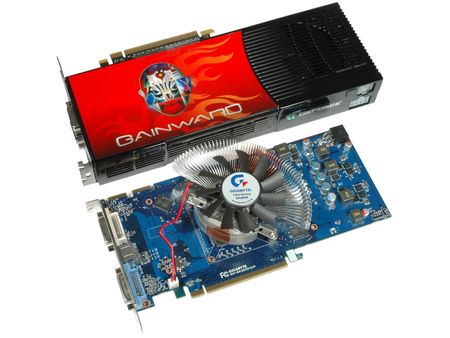PCI Express 2.0 Graphics Cards Tested
How Does PCI Express 2.0 Scale?
The PCI Express interface has been around for almost four years, and is in the middle of transitioning to its second generation. PCIe 2.0 effectively doubles bandwidth and offers better flexibility, while maintaining compatibility with PCIe 1.1. When PCI Express was first introduced, it provided more throughput, scalability and flexibility than the aged AGP bus, and it allowed the graphics companies ATI and Nvidia to create multi-card solutions for further 3D acceleration and quality improvement. The second generation of PCI Express was introduced with Intel’s X38 enthusiast chipset, and is being carried on by Intel’s X48, AMD’s 790/770 family and Nvidia’s nForce 7 series. But do we really need PCI Express 2.0 today?
Performance differences among technically similar platforms have almost disappeared, making feature differences and overclocking capabilities the main differentiators. Unless a motherboard manufacturer really messes up fine-tuning its product, two different motherboards based on the same chipset will perform alike when operated with comparable parameters. While only the latest chipset generation supports PCI Express 2.0 today, there are still many other chipsets available, which provide equal performance and comparable features. However, PCI Express 2.0 offers twice the bandwidth of PCI Express 1.1, by doubling the throughput per lane from 250 MB/s to 500 MB/s. A x16 PCI Express link hence offers the same bandwidth as PCI Express 2.0 at x8.
In order to benefit from the higher throughput, you’ll need both a motherboard and a graphics card that comply with PCIe 2.0. While ATI has been quick with deploying PCIe 2.0 to its Radeon HD 3000 family, only the latest GeForce 9 graphics cards are PCIe 2.0 compliant.
We took an ATI Radeon HD3850 mainstream card and an Nvidia GeForce 9800 GX2 dual GPU high end board and limited their PCI Express 2.0 interfaces to x8, x4 and x1 link speeds in an effort to find out whether or not PCI Express 2.0 is really necessary to achieve the expected performance. Regardless of the outcome, PCI Express 2.0 does have one major advantage: new PCIe 2.0 graphics cards are compatible with PCIe 1.1 motherboards, meaning that they will run on them using the available bandwidth of PCI Express 1.1.
Related Articles:
- SLI is Coming: Time to Analyze PCI Express
- PCI Express Scaling Analysis
Get Tom's Hardware's best news and in-depth reviews, straight to your inbox.
Current page: How Does PCI Express 2.0 Scale?
Next Page PCI Express 2.0 Details